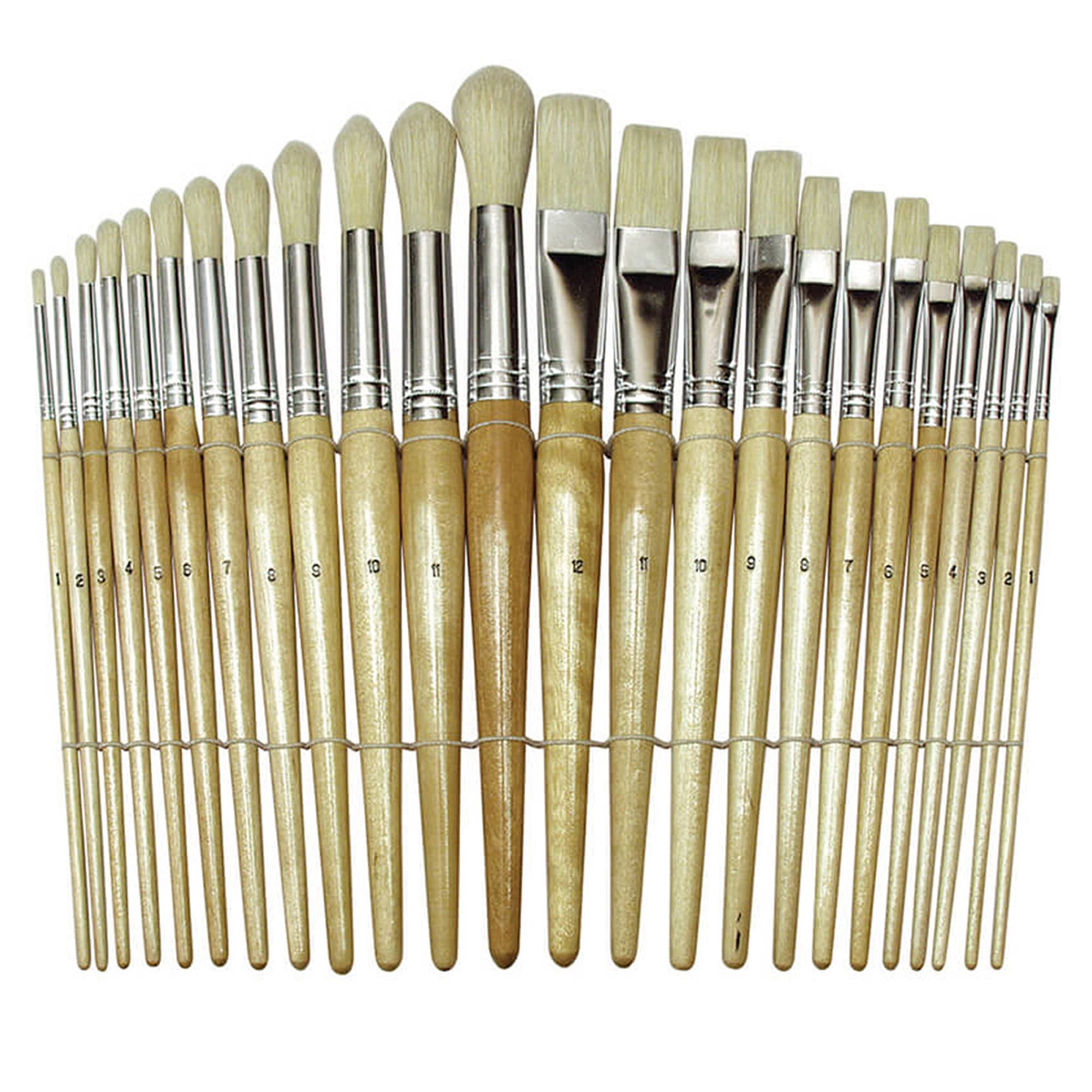

Not only are these more cost-effective, but they are easier to clean. Synthetic brushes are typically made of nylon or polyester. Instead, hog bristle is stiffer, sturdier, and can hold a lot of paint. Most often these bristles are made from ox, pony, goat, mongoose, or badger.

At the high end, soft hair brushes are made from sable, while camel hair brushes are on the lower end, but aren’t actually made from a camel. Natural brushes are divided into two categories, soft hair and hog bristles.

No matter the length, bristles are made of different materials-natural or synthetic. Short bristles can be particularly useful when employing techniques like stippling or if you want complete control over your brushstrokes. In general, medium or long bristles work well with fluid paints and, depending on the shape, can be used for fine detail or coverage. Photo: Stock Photos from Cafe Racer/Shutterstockīristles come in different lengths-long, medium, and short-depending on the shape of the brush and its use. Rigger brushes, also known as liner brushes, make long continuous strokes that are useful for painting fine details like branches, as well as for lettering and calligraphy. Originally used to paint the rigging of ships in paintings, they are the fine liners of the brush world. Rigger – These long, thin round brushes work well with fluid paint.For those that work in layers, mop brushes can be used to apply a thin glaze of color over layers that are drying. They’re especially useful for watercolorists, as they are wonderful at creating washes of color. Mop – Mop brushes come in larger sizes and have soft bristles with a rounded edge.But they also come in handy for applying paint to larger areas, making them another versatile tool. They are especially useful for making curved lines and filling in corners where the tip can easily reach. Angle – Angle brushes are flat with-you guessed it-an angled edge.Natural bristles make this brush particularly effective for blending, feathering, and smoothing, while synthetic bristles work well for texture. Fan – The splayed out bristles of a fan brush can help create interesting textural effects on trees, clouds, and other natural elements.Filbert brushes take the best of round and flat brushes, meaning they can be used for detail as well as coverage. Filbert – This flat brush with domed edges can be either medium or long-bristled.However, they aren't good for wet on wet, as their stiff bristles can pull up the underlayer of paint. With shorter and stiffer bristles than a flat brush, these paintbrushes work well with heavy body paints when doing impasto and with thin paints to help drive the pigment into the canvas. Bright – A bright brush is a short-bristled flat brush with edges that curve slightly toward the center.By using the edge of the brush, it’s also possible to make fine lines. Flat – Versatile with long or medium bristles, flat brushes can be used for everything from filling in large spaces to creating bold strokes, impasto, or washes.Round brushes work better with thinner paints. By changing the pressure on the brush, it’s easy to vary from thin to thick lines.

Round brushes are ideal for sketching and filling in smaller areas, as well as linework.


 0 kommentar(er)
0 kommentar(er)
